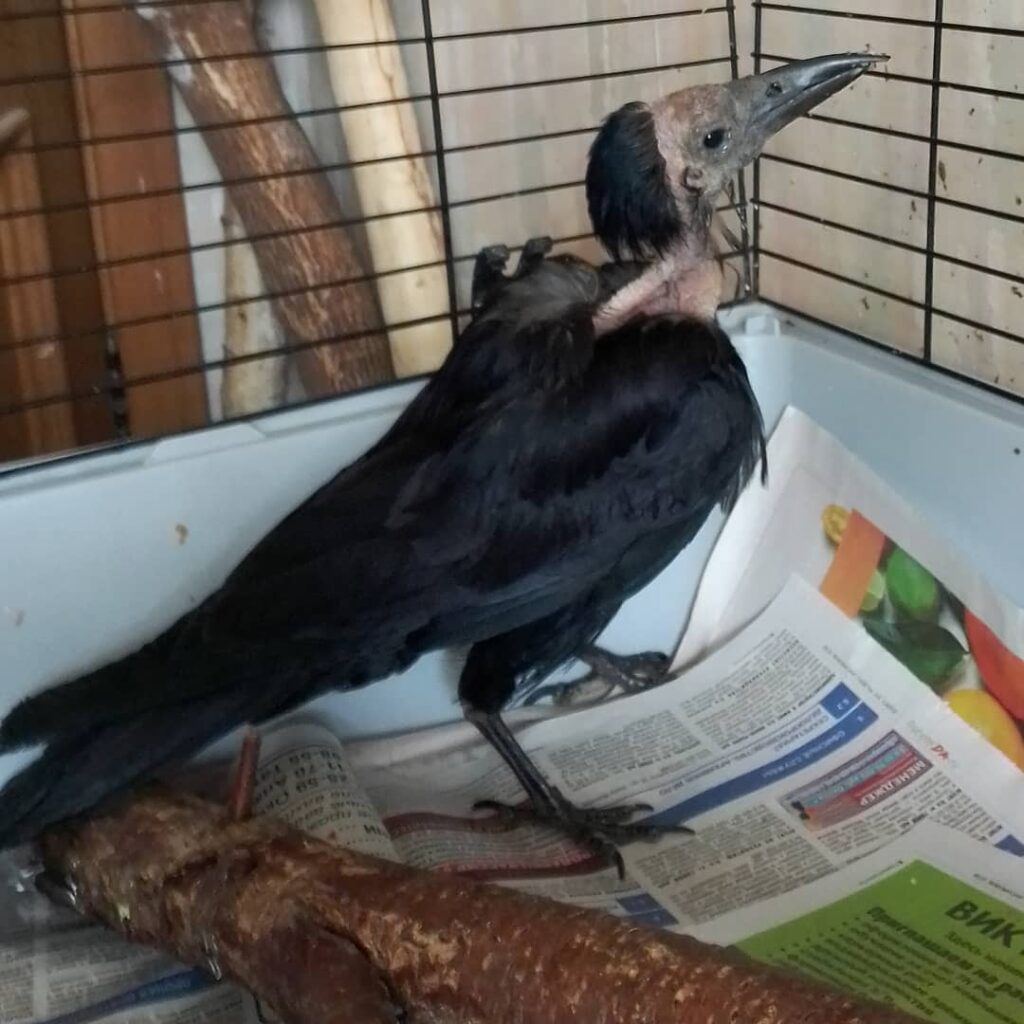| Guide | Treat a fungal infection |
| Target Group | Corvids |
| Author | info@corvidlove.com |
| Version | 20220414 |
| NOTE: In all my guides, I assume a situation where a rehabilitator takes responsibility for caring for animals in an ethically correct manner. One should always try to minimize stress to the bird and since birds, like humans, are not the same, being creative may mean dealing with a problem in different ways! If I see different ways of doing the same thing, I try to write it down in my guides, but it is always up to the rehabilitator to take responsibility. I don’t have to write “I recommend euthanasia” or “contact a vet” or “by law, you should..” because I start from the situation where you are doing the best for the bird and as a rehabilitator you have learned to draw the line so that you don’t end up in an undesirable or illegal situation. There is perhaps an eternal struggle between what you would like to do and what is best for the bird. There are also many factors in which the same situation can produce different results. For example: access to a veterinarian, lack of time, lack of knowledge and previous experience can, among other things, cause major differences in the treatment and decision-making process and, indirectly, the final outcome. Knowledge of the basics can make a huge difference to the stress level of the crow. For example, avoid anything that is black or checkered. They don’t like it instinctively and it creates stress when they see you handling something that is black. I put energy into my guides to make it easier for a rehabilitator to find information and to spread knowledge. If you see a way to improve my guides or if you see an error or want to add something, please let me know! If you feel apprehensive about doing something because it is new, ask other rehabbers or a veterinarian for help. The guides are constantly being updated, so make sure you always download the newest version from www.corvidlove.com |
This guide describes what to do with birds that have lost feathers on and around their heads
Cause and spread
Various species of fungi live together with bacteria on the skin in some kind of micro-ecosystem. When the environment/conditions on the skin change, an imbalance occurs and an infection can develop.
A bird that has a problem with fungal infections will not be infected, but since we do not know what the cause is with 100% certainty, it is probably a good idea to keep the bird in another room.
Symptoms:
The feathers on and around the head are shed. This can happen over a very short period of time. Various abscesses may also occur as bacteria may have the chance to enter through the irritated and infected skin and spread. The bird may start scratching itself with its claws, making matters worse. It is therefore also important to keep the cage/aviary + perches extra clean during treatment for at least a week.

Treatment, medication and dosage:
Without treatment, a crow bird may die from the infection. This is because it spreads through the body. It is not the fungus itself that causes death, but the bacteria. The fungus is just a symptom that something is wrong with the body.
There are different products you need to get hold of to treat the problem.
A vet will need to prescribe Baytril (broad-spectrum antibiotic) to kill the bacteria (the bird may be able to do without if it has no abscesses).
Wounds and any skin that has started to lose its feathers should be rubbed with an over-the-counter antifungal ointment. Daktar is available at your pharmacy and costs next to nothing. It takes up to two weeks and you should be able to see little dots on the bare skin (new feathers coming out). If the bird is not too stressed, you can continue the treatment for a few more days. As an alternative, you can buy “Gentian Violet 1%” on Ebay (and in some specialist shops in Sweden), which you can brush on any skin that has an infestation. Be careful around the eye, as you don’t want to get it in your eye! Gentian Violet is usually applied at the same time, 3 days in a row.
If the bird also has a problem with bacteria, then it is important to extend the treatment. You then need to clean the area with LHP ointment 1% (also available over the counter at the pharmacy) or Manuka honey (natural product you can buy at the pharmacy!) before applying Daktar to the area.
Don’t forget that you also need to kill the bacteria on the branch/sit stick. If possible, the stick should be boiled. Otherwise, you can use chlorhexidine spray.


Important addition!
Also talk to your vet to see if he/she agrees with you about the treatment. As it is not a common disease, there is a chance that the vet is not familiar with the treatment method and it is only good that you share all the information available here.
